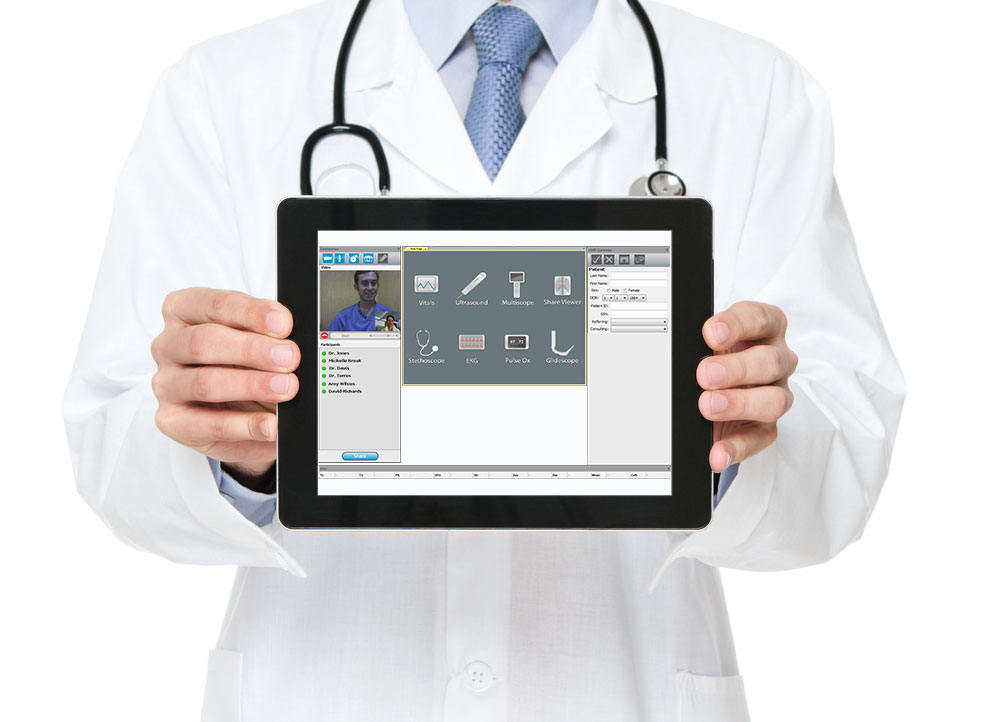Missouri’s Mercy Hospitals Open World’s First Virtual Care Center
Mercy Hospitals has opened a Virtual Care Center, the world’s first facility dedicated exclusively to care outside its own walls, including some patients in the Barry County.
A four-story, 125,000-square-foot building in Chesterfield houses 330 Mercy coworkers — but no patients. “It’s a hospital without beds,” said Dr. Randy Moore, president of Mercy Virtual. “We have the medical team here, but with technology like highly-sensitive cameras and real-time vital signs, our providers can ‘see’ patients where they are. That may be one of Mercy’s traditional hospitals, a physician office, or in some cases, the patient’s home.”
For Barry County residents who are accustomed to going to a traditional hospital for care, the Virtual Care Center gives immediate access to specialty physicians; medical team cohesiveness; effective, faster care; and time and money saved on traveling to larger Mercy facilities in Springfield or Joplin.
Doug Stroemel, Mercy administrator for hospitals in Cassville, Aurora and Berryville, Ark., said the new technology will have an impact on all Mercy facilities, and it is already being used in Cassville. “The service we’re utilizing is our telestroke program,” he said. “It’s in our emergency room. It’s a very valuable service for our team to connect with our neurologist to be able to diagnose and treat a stroke effectively. And we have our own emergency room physician in there and our nursing team there. They begin to take care of the patient, do a CT scan, and then we’re able to connect through the virtual care center.

“The neurologist can discuss the case, see the patient, help to examine the patient, and also look at the CT scan. So, we’re able to connect with visual and audio connections, but also the digital image of the CT scan. As a team, they can offer their advice on how to treat the patient. Obviously, smaller hospitals are not allowed to have a neurologist on staff 24-7, and this allows us to utilize that resource from long distances.”
Stroemel said when diagnosing and treating a stroke, time is of the essence, and it’s vital to understand what type it is to know the correct treatment. “That’s a life and death decision,” he said. “So, it’s very important and valuable to be able to link in to a neurologist for this service. We use this service several times a month. The neurologist we link up with could be in Springfield, St. Louis or Oklahoma City. They’re all Mercy neurologists.”
Stroemel said he and the hospital as a whole are very excited about the future of telemedicine and its implications and benefits to patients. “We’ve always tried to bring outreach specialty physicians in to bring care closer to home,” he said. “Right now, we have a general surgeon, cardiology, ENT, occupational medicine and podiatry. We’re able to have them come in, but as you start dealing with the physician shortage, we’d like to bring others in. We’ll be able to use telemedicine for clinic visits as well.”
That could mean saving a Barry County resident a trip to Springfield for a routine visit to a specialist, because of the lack of specialists locally. “Let’s say you have a rash and you don’t want to drive to Springfield,” Stroemel said. “You could have a telemedicine visit in Cassville, and we hook you up with a dermatologist in Springfield and look at the rash and make a decision how to treat that.”

Stroemel said a high-tech tele-cart used in such visits has a high-definition camera, microphone capabilities and stethoscopes. “You just have to have a nurse on this end to be the hands and eyes of the physician and to focus the camera on the area of concern so the patient is able to be examined,” he said. “So we’re excited about expanding that.” Also, in the emergency room, we’re looking at future applications on how to connect specialty physicians in Springfield with us. For instance, cardiologists, trauma and burns. And the others would be outreach clinics, for example pulmonology, if you’re short of breath but don’t want to go to Springfield.”
Eliminating a long drive would save patients time and money, which could mean less time lost at work, less gas expenses and less stress. Stroemel does not yet know how far into the future routine-type telemedicine specialist visits will become a reality for patients, but Mercy is investigating the feasibility of providing those services. “Technology can really help us, especially when we’re a long distance from a major metropolitan area and specialty physicians,” he said. “It really adds a level of comfort and convenience and we’re really pleased to offer these services to the residents of our community and looking forward to expanding this type of service in the community.”
The $54 million building in Chesterfield is the nerve center for Mercy’s existing telemedicine programs, including:
- Mercy SafeWatch — Launched in 2006, it’s the largest single-hub electronic intensive care unit (ICU) in the nation. Doctors and nurses monitor patients’ vital signs and provide a second set of eyes to bedside caregivers in 30 ICUs across five states. SafeWatch ICUs have seen a 15 percent reduction in how long patients stay in the hospital.
- Telestroke — Many community emergency rooms across the country do not have a neurologist on-site. With Mercy’s telestroke program, patients who come to the ER with symptoms of a stroke can be seen immediately by a neurologist via telemedicine.
- Virtual Hospitalists — A team of doctors is dedicated to seeing patients within the hospital around-the-clock using virtual care technology. They can order needed tests or read results, resulting in quicker care.
- Home Monitoring — Mercy provides continuous monitoring for hundreds of chronically ill patients in their homes after hospitalization.




